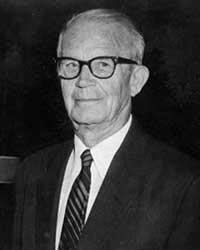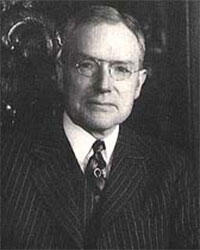Origins
"International House is a laboratory for a new kind of experiment – the day-to-day practice of international fellowship among men and women." — John D. Rockefeller Jr., I-House Benefactor
I-House Origins
 Harry Edmonds
Harry Edmonds
International House Berkeley was part of the larger “International House Movement” founded by Harry Edmonds who, as a young man working for the Young Men’s Christian Association in 1909, had a chance meeting with a Chinese student. Edmonds’ casual “Good morning” on the steps of the Columbia University library provoked the startled response: “I’ve been in New York three weeks, and you are the fi rst person who has spoken to me.”
Continue Reading
Moved by this experience, Edmonds investigated the situation of foreign students in New York City. Attempting to counter the loneliness and isolation of these students, Edmonds and his wife, Florence, started to have teas and Sunday Suppers in their home. By 1911, this practice led to the development of the Cosmopolitan College Club. By 1919, the Club included over 600 students representing more than 65 countries, and its activities consisted of excursions, social events and housing assistance.
Convinced of the need to find a place where foreign and U.S. students could live together and thereby promote international understanding, Edmonds encouraged John D. Rockefeller, Jr. to build International House in New York City. Funded by Mr. Rockefeller at a cost of $3,000,000, it opened in 1924 as a residence and program center which served about 500 students. As its first director, Edmonds saw it as a place where people of diverse national and cultural backgrounds – without restrictions as to color, race, creed or sex – could share the common experience of everyday life; a place where person-to-person contact would contribute to combatting ignorance, prejudice and is understanding.
 John D. Rockefeller Jr.
John D. Rockefeller Jr.
The immediate and exciting success of International House New York spurred Rockefeller to extend the idea. In 1926, Edmonds traveled west to evaluate possible locations for a second International House. Berkeley, California was selected because the Bay Area was the U.S.point of entry from the Orient and claimed the largest number of foreign students on the West Coast (in those days about 200). John D. Rockefeller Jr.’s gift of $1,800,000 to the University of California resulted in the establishment of International House Berkeley in 1930.
Continue Reading
In a letter to University of California President Robert Gordon Sproul, Rockefeller outlined his reasons for the gift: “The idea of the establishment of this institution on the Pacific Coast was suggested by the success of a similar one on the Atlantic Coast, in New York City, which has become well and favorably known throughout the world. By bringing together in unfettered cooperation the educated young people of all lands, many of whom will in years to come be leaders in their several countries, and by giving them the full opportunity for frank discussion on terms of equality, there is being performed, I believe, a service for the well-being of the world, the importance of which it is difficult to over-value. International House is a laboratory for a new kind of experiment – the day-to-day practice of international fellowship among men and women.”
The Berkeley House, while owned by the University, was leased to a separate corporation whose Board of Directors, men and women of standing in the community, would be responsible for seeing that the purposes of the institution would be fulfilled. Later in the ‘30s, Rockefeller established similar institutions in Chicago and Paris. He hoped that contact between the Houses would facilitate an exchange of ideas and experiences that would assist the carrying out of a kindred purpose.

